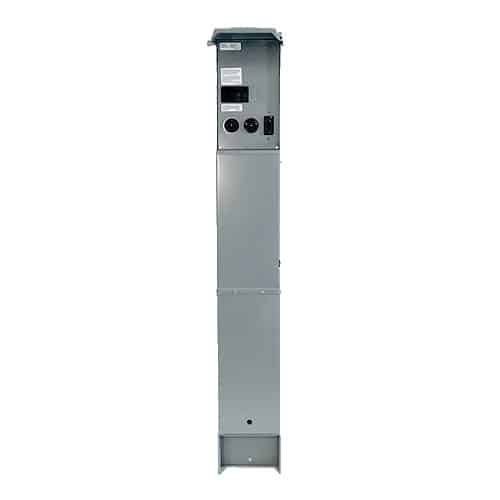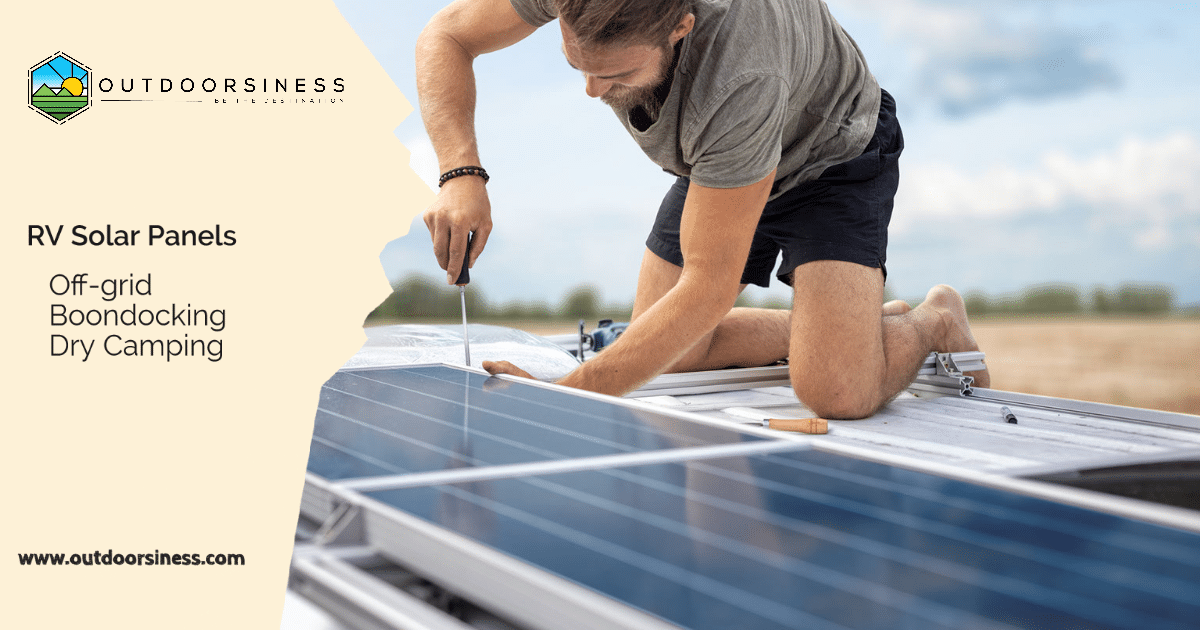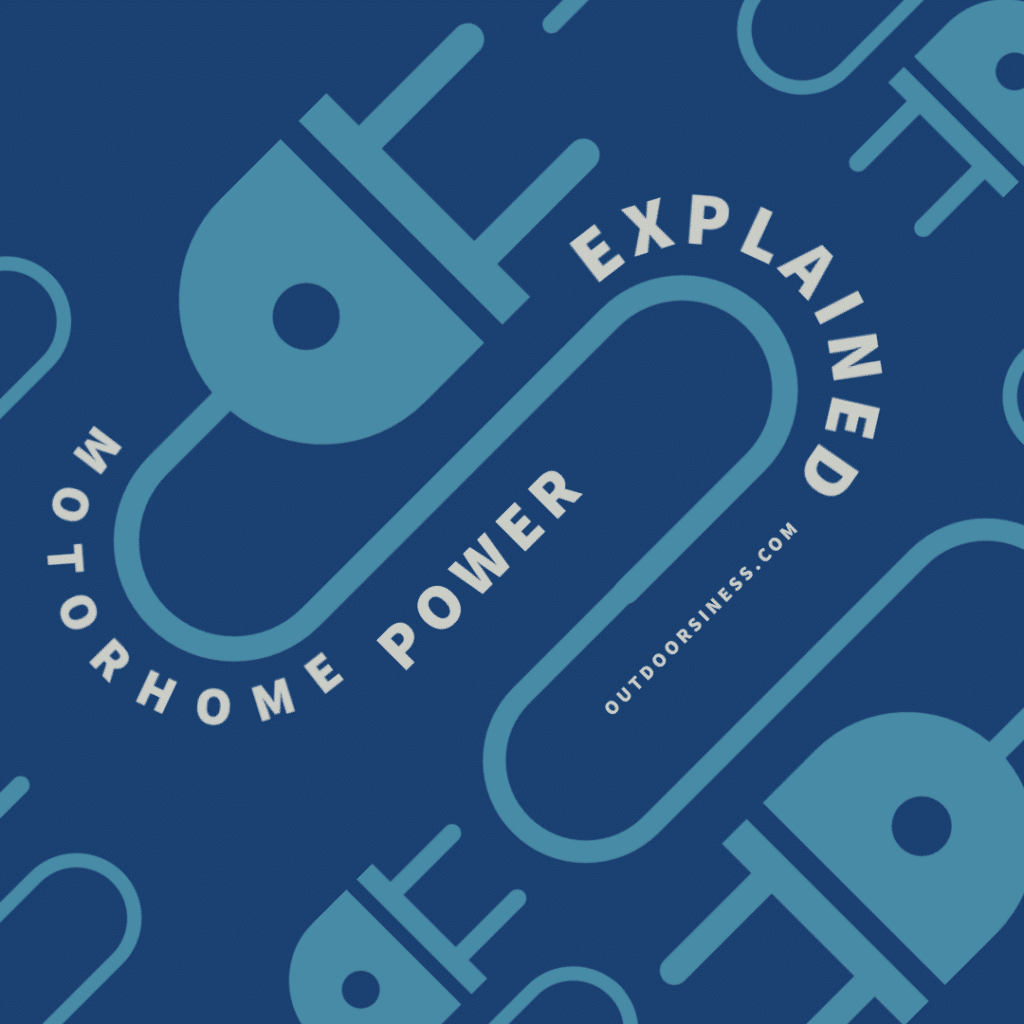Your RV’s electrical system allows you to use many of the contemporary amenities that you’ve grown accustomed to, such as overhead lighting and vent fans, as well as your HVAC system and refrigerator. And while it’s great to have access to all of that stuff on the road, if you want it operate without problems, having a basic understanding of how your RV’s electrical systems function is beneficial.A basic understanding of RV wiring and power sources might assist you in deciding where to get electricity from — and also help you troubleshoot if something goes wrong.
RV wiring can be complex and intimidating, but we’re here to help. We’ll explain the basics of RV wiring in terms that everyone can understand. You won’t learn how to rewire your entire RV from scratch, but you will develop a working understanding of batteries, panels, wires, and cables.
Wondering how to power your RV? Here’s a quick explanation of how electricity works in RVs.
Although it may seem like you have an infinite amount of electrical power in your RV or home, that is not the case. To help increase your understanding and use of electricity, it’s important to review a formula from high school – one which you’ve probably forgotten since then. Watts (overall power) is equal to amps (current) multiplied by volts (voltage). The equation looks like this: watts = amps x volts, or W = A * V. This formula will tell you how many electrical devices you can have on at one time in your RV. If you exceed the amount of available wattage, your circuits will trip–which may be something you’re familiar with if you’ve tried to use your microwave and hair dryer simultaneously!
It’s important to understand the difference between AC and DC electrical systems since your RV has both. In a DC system, electricity only flows in one direction. This is why it’s called Direct Current. With AC electricity, however, the current changes directions periodically – hence its name Alternating Current.
One recreational vehicle, two electrical systems
A battery powers the 12-volt DC electrical system, while an RV electrical hookup plug or a generator powers the 120-volt AC system. The 12-volt system is powered by a battery (or in some cases, several batteries), which includes things like as your water heater’s start-up, furnace, and refrigerator. A variety of other items are also powered by this system. Your TV, for example, is powered by an RV electrical hookup plug or a generator. It also serves as a method of delivering power to everyday use products such as kitchen appliances and electronic equipment.
RV Power Sources: Everything You Need to Know About Batteries
The 12-volt system in your RV needs to have a total of 12 volts, as previously said. A single 12-volt battery or several 12-volt batteries coupled together in a parallel connection may be used to generate this quantity. However, combining two 6-volt batteries in a series circuit (to essentially create a 12-volt battery) is typically preferable than using a single 12- volt battery. Because you’re utilizing two 6 – Volt batteries, you’ll have to make more room for them. The disadvantage of utilizing two 6-volt batteries is that they take up more space than one. However, if your camping needs necessitate a longer battery life, this is a worthwhile tradeoff. Your 12-volt battery (or batteries) will automatically charge when connected to an RV electrical pedestal (or any other source of power). If you’re boon docking or dry camping without being plugged in, you may use your batteries to power anything that runs on 12 volts..
The inverter allows you to change the 12-volt battery’s direct current into a 120-volt alternating current, which is necessary to power appliances that require 120 volts. You should know how long the discharge will last so you can plan accordingly; all batteries eventually run out of juice and will need to be recharged.
30 Amp or 50 Amp?
The majority of RVs come with a power cord that plugs into an RV pedestal at most campgrounds (only developed campgrounds with hookups). This is commonly known as being “shore power, power pedestals, rv outlets.” These cords are available in two different amperages: 30-amp and 50-amp. A 30-amp cord has three prongs, and the 50-amp has four. Obviously, if your RV is equipped for 50 amps, you can use a lot more electricity simultaneously than if you’re only able to utilize 30 amps.*For reference on how much additional power this equipment provides, please refer back to the Electricity Formula section at the beginning of this post.

Some RV parks do have 50-amp and 30-amp connections, but certain campsites only have 30-ampe. As a result, it’s a good idea to invest $20 or so in a 50 amp to 30 amp adapter. Keep in mind that if you’re reducing your amperage down to 30, you won’t be able to use as much power as you would if you were plugged in at 50. Also, avoid using extension cords with multiple outlets by using the shortest possible adapters and extensions. An RV with 50-amp capacity can be adapted to use a 30-amp cord, but an RV that is only 30-amps cannot be upgraded to utilize a 50 amp cord.
Before You Plug Into Your RV Pedestal
When you arrive at your campsite, it’s tempting to just flip everything on. However, keeping safety in mind is important when dealing with electricity. To begin, test the hook up with a polarity tester to ensure that the campground’s wiring is in good functioning order. If the campground’s wiring isn’t working properly, your polarity testic will notify you before you damage any of the RV electrical system components. This is a quite popular and inexpensive device that may be purchased for around $40, and it’s an excellent precaution against accidental harm to your RV’s electrical wiring.
Before you do anything else, take a few safety precautions. Switch off your RV’s electrical system, the RV electrical pedestal, and anything else connected to an interior outlet. Once your power cord is plugged in, then turn them back on again. You should also install a surge guard to stop any damage that could be caused by sudden power surges. They cost a bit of money upfront but it’s worth it compared to the alternative damages that could occur down the line.
Find Out What Causes The Most Electrical Draw In Your RV
Not every appliance pulls the same amount of electricity– some run well on very little power while others are big energy consumers. In general, any devices that generate heat or get cold use up a lot of electricity, and you can’t have too many running at the same time if you’re working with a 30-amp cord.
Your kitchen appliances use a lot of electricity, including your microwave, coffee maker, and toaster. Air conditioning units also pull a lot of power. Bathroom devices like hair dryers and curling irons also use a lot of electricity. However, items like your TV and stereo use considerably less power.
RV Generators
If there’s no option to connect your RV to an rv power pedestal or power at a campsite, you can still generate the electricity you need for appliances with a generator–if you have one. Many RVs come with a propane-operated generator, but if yours is small or didn’t come installed, you’ll need to buy one separately.
The generator will produce AC power, which can be used to operate your 120-volt equipment and refrigerator. That being said, many boondockers avoid using generators due to the cost of propane as well as the loud noise and stench of its exhaust, thus there’s yet another path forward.
RV Solar

If you enjoy the concept of camping off the grid or like public campgrounds with no power connections, solar panels may be a viable option for powering your RV and charging its batteries. This is an especially great alternative for boondockers and dry campers because there’s rarely any need to connect up. RV solar panels come in a variety of sizes, with ratings indicating the maximum amount of watts they can produce. If you have a large RV, you will need more solar panels. These panels get wired directly to the inverter/charger unit and battery. Although there is some initial work that needs to be done to set up the system, once it is running, you will not need to rely on others for your electrical needs.
Keep in mind that in order to transform the power generated by your solar panels into the electrical current your RV’s appliances require, you’ll need an inverter. Solar power, on its own, is difficult to run your air conditioning on and, if you’re boon-docking, isn’t it more enjoyable to go somewhere where the weather is already spectacular?
RV Electrical Maintenance Made Easy
RV electrical systems can be complex and confusing, but with a little know-how, you can keep your RV running smoothly. In this course, we’ll cover the basics of RV electrical maintenance and troubleshooting. You’ll learn how to properly care for your batteries, avoid overloading your system, and troubleshoot common problems. By the end of this course, you’ll have the skills you need to confidently maintain your own RV electrical system.
A small problem easily goes undetected until it turns into a much larger one. To prevent this, frequently check your batteries and their connections for any wear and tear. A good time to do this would be before you leave on a trip so that you’re not stranded in an unknown place if something does go wrong. Make sure all of the connection points are tight, there’s no damage or fraying, and everything is clean with no corrosion. If anything looks out of the ordinary, get it checked by a professional as soon as possible.
You’ll need to check the electrolyte levels and add water from time to time if you’re using lead-acid batteries. However, more modern deep-cycle batteries help circumvent this maintenance need and can also extend the life of your batteries.
Additionally, always know where the RV electrical panels are in your motorhome. Check to see if a circuit is tripped or a fuse has blown before assuming the problem is with your device. A blown fuse may usually be seen, but sometimes it isn’t. If you have a little test light, you can use it to check if a fuse is good in that case. If you replace a fuse and it blows immediately, there’s probably something wrong with the power supply. You may also try looking for any electrical connections to determine if there’s an issue; however, these are typically difficult to find without expert assistance.
Electricity: Always Exercise Extreme Caution
Unless you’re confident in your abilities to work with electricity, it’s best to have RV electrical repairs done by someone who knows what they’re doing. This is for both your safety and the longevity of your vehicle. If you are comfortable working with electricity, make sure to follow these precautionary measures: turn off power at the source before working, treat all wires as if they live, use tools with non-conducting handles, etc.
In an ideal world, you’d be able to just plug anything you wanted into your RV’s outlets and it would work. You wouldn’t have to worry about current or voltage, and your batteries would always be fully charged. While we of course don’t live in a perfect world, the majority of your RV electrical system can stay out of the way while allowing you to power what you want without causing too much trouble. However, it’s still beneficial to understand the fundamentals of how electricity is flowing and how your RV electrical system works.
We cannot stress enough how important it is to be careful with electricity in your RV. It is a powerful force and can be deadly if not handled properly. If you are not comfortable doing a repair, if an RV electrical connection seems faulty, or if you have concerns about your batteries or wiring, have an experienced professional take a look. This could save your RV, money, and potentially even your life in serious situations.







Leave a Reply
You must be logged in to post a comment.